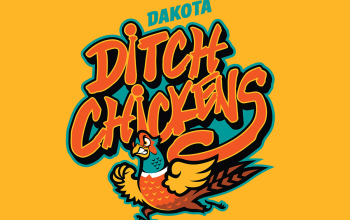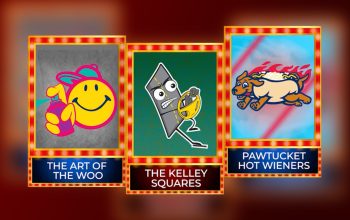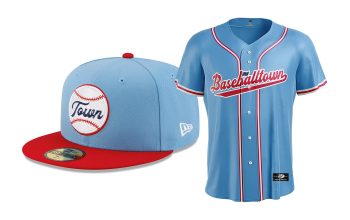The scene that Steve Bryant describes the night he purchased the Columbus Astros before the 1989 season sounds like a cliché from a cheesy movie. “I bought it from four doctors in Columbus, Georgia, on a Saturday night,” Bryant said. “They pulled out a fifth of Jack Daniels on the negotiating table, and at the end of the night, I bought a baseball team.”
He continued, “The first time I went to the ballpark for a game, I actually owned the team. I bought it Saturday night, and I went to Sunday’s game.”
As you might imagine, there can be problems with an alcohol-fueled impulse purchase of a double-A baseball team. That Sunday afternoon’s game was at 1:00, and because it was summer in Georgia, it was stiflingly hot. One glance around the stadium gave Bryant cause for concern. “There were more players on the field warming up than there were fans in the stadium,” he said. “What scared me the most was that a foul ball went in the stands, and no one went after it. It just sat there. I thought, what have I done?”
So Bryant, whose background is in advertising, knew that changes needed to be made. First, he knew that the team would be moving to Raleigh, North Carolina, as soon as a stadium was built. Second, he knew that naming a team after its Major League affiliate was boring, and a missed opportunity, so a complete rebranding was in order.
He had several requirements for the new logo, including that it appeal to kids (because it’s minor league baseball and that’s the law), that it be unique (“If you have the Chicago Bulls and the Durham Bulls, then that’s not unique,” he said), and that it have both local significance and national appeal.
Also, he didn’t want it to be like those dumb new mass-noun soccer teams. “We wanted to kind of poke fun at the establishment, because all the hockey and the new soccer teams, they were called the Rage and the Fury,” Bryant said. “How do you get your arms around that? What is tangible about that? How do you do a mascot with Rage?”
Names that were rejected included references to the Civil War, like Cannons, and one based on a delicacy found in a drug store in Columbus—Scrambled Dogs, a reference to hot dogs chopped up into cole slaw with onions, pickles, beans, and oyster crackers, developed by local World War II hero Charles Stevens for the Dinglewood Pharmacy more than 50 years ago.
The name the team settled on, Mudcats, which they used for their final two years in Columbus, and their quarter century in North Carolina since, was one of the early wacky minor league nicknames. “We were sort of noted as the first team to really start the logo craze,” Bryant said. “The name Mudcats, there was nothing nearly that outlandish in sports at all.”
And just what is a mudcat? “A mudcat is a species of catfish,” Bryant said. “It’s a fierce fighter. Fishermen prize them because they put up such a fight and they’re such a feisty fish…. They’re called mudcats because they like to swim at the bottom of muddy lagoons and ponds and stuff like that.”

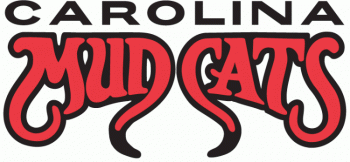 The primary logo features a catfish swimming through the letter C, which stood for Columbus in 1989 and 1990, then for Carolina ever since. A wordmark logo features catfish whiskers hanging from the letters D and C. The logo was drawn by artist Frank Harrod, who according to a 1991 article in The Times-News of Henderson, North Carolina, was paid $500—nearly twice his normal rate. The team got a pretty good deal, too, though.
The primary logo features a catfish swimming through the letter C, which stood for Columbus in 1989 and 1990, then for Carolina ever since. A wordmark logo features catfish whiskers hanging from the letters D and C. The logo was drawn by artist Frank Harrod, who according to a 1991 article in The Times-News of Henderson, North Carolina, was paid $500—nearly twice his normal rate. The team got a pretty good deal, too, though.
“For the first four or five years, we were the number one team in the country in sales, which was good because we weren’t doing that well at the gate,” Bryant said. “The logo sort of helped propel us.”

In fact, the logo became a nationwide phenomenon. First came early success at home: They sold out of hats in their first season almost immediately, as fans went to games just to buy souvenirs. Then, a local newspaper promotion that offered a Mudcats hat with a renewed subscription sold out of 1,000 hats in less than a week, according to Bryant. The team started advertising in publications like Baseball Weekly and Baseball America (these were the days before the internet). Then after a photo of a kid in a Mudcats hat from the Atlanta Journal went national, sales really took off, and they haven’t slowed down.
“Even though virtually every team in America has changed their name since we have, we’re still in the top 10 sales in minor league baseball every year,” Bryant said.
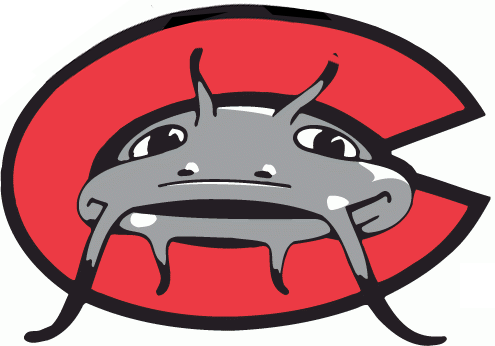
While the logo was developed quickly, one important tweak early on made a big difference.
“The first rendition just had the catfish head and the C,” Bryant said. “When we added the tail, it gave that whole logo some movement, so it looked like the catfish, which tend to swim side to side, was sort of meandering through the C.”
The Carolina Mudcats are currently a high-A affiliate of the Atlanta Braves and were previously with the Cleveland Indians. Prior to the existence of the single-A Mudcats, a double-A iteration of the team was affiliated with the Pirates (1991-1998), Rockies (1999-2002), Marlins (2003-2008), and Reds (2009-2011). While affiliations and classification have changed, the logo has remained constant. Their devotion to the logo is a simply a question of running a good campaign—in more ways than one. “When Bill Clinton was running for office the first time, there was a sign in his campaign headquarters, ‘It’s the economy, stupid,’ In other words, don’t talk about anything else,” Bryant said. “The sign in our office is, ‘It’s the fish, stupid.’ You don’t screw around with the fish.”
That said, for a team that doesn’t screw around with the fish, Bryant offers this tidbit: “You know, we serve catfish sandwiches, so we’re one of the few people that eat their mascot.”
Bryant compares the longevity of his team’s logo to another nearby organization. “It’s like, would Duke University change their logo?” he asked. “It’s a standard.”
Speaking of sports teams in the Raleigh-Durham area, the Mudcats have a friendly rivalry with the nearby Durham Bulls, just 25 miles away.

“We’re one of the few teams that share a market with another team,” Bryant said. “The owner of the other team is a billionaire and I’m a thousandaire. He owns a couple of TV and video stations and I own a station wagon.”
And while the Bulls were buoyed by a certain classic baseball movie, the Mudcats claim a film of their own, because their playing field was built in a plowed-under tobacco field. To accentuate that connection, they flew in Don Lansing, who owns the house from the Field of Dreams movie and who had never left Iowa, to throw out the ceremonial first pitch of their first game in Raleigh. The event was so popular that they sold out, and it created a familiar scene.
“We turned 4,000 cars away, and in all directions you saw headlights,” Bryant said. “We said, this is so much like the movie it’s scary.”
A lot has changed in minor league baseball since Steve Bryant purchased a baseball team over what he describes as a very expensive bottle of Jack Daniels—but that feisty catfish meandering through a big, bold, sans serif C is not one of them.












